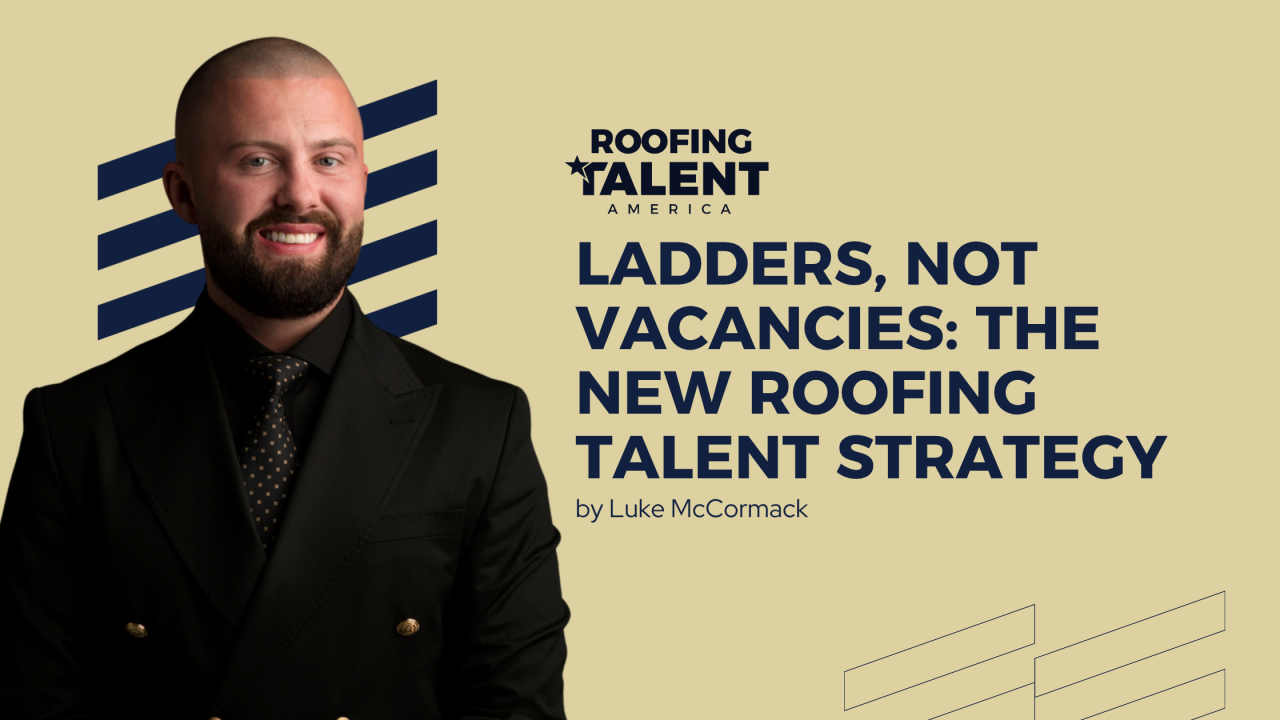Why Good People Leave: The Hidden Cost of Bad Management
By Luke McCormack

Half the room raised their hand...
That's what happened when I asked how many people had ever left a company because of a bad manager, over half admitted they had.
And every time I ask that question, in different rooms, at different events, across different sectors of the roofing industry, the answer is always the same.
It’s not the work that drives people away.
It’s how they’re led.
The gap between intention and clarity
When people talk about “bad managers,” it’s rarely because the person is cruel, lazy, or incompetent.
More often, it’s because they’re unclear.
They haven’t defined what success actually looks like.
They haven’t articulated what’s expected.
And they haven’t given their people a sense of direction.
That lack of clarity is toxic, not because it breeds conflict, but because it breeds confusion.
As an employee, you start trying to fill in the gaps yourself. You guess what matters. You overcompensate. You interpret silence as failure.
And the worst part? You start doubting yourself.
The danger of aimless leaders
In roofing, like most industries, we have a lot of strong, independent people.
Leaders. Doers. Problem-solvers.
But here’s the paradox: if you don’t give leaders clarity, they’ll still lead, they’ll just lead in their own direction.
And when a company’s best people start leading themselves instead of following a unified vision, chaos creeps in quietly.
Not through rebellion, but through misalignment.
As I said in this particular keynote, “Leaders lead. If you don’t tell them where to lead, they go their own way.”
That’s not insubordination. That’s human nature.
Culture is communication, not decoration
When I think back on my own career, from roofing consultant to team leader, and now CEO, I can still remember what it felt like to work under poor management.
It wasn’t anger or frustration. It was disconnection.
It was the feeling of trying your hardest, but never being sure it was enough.
That experience shaped how I lead today.
At Roofing Talent America (RTA), I’ve learned that culture isn’t a set of values on a wall.
It’s the daily act of communicating clearly, caring genuinely, and giving people feedback they can use.
The best thing a leader can do isn’t command or control, it’s connect.
That’s what turns a manager into a mentor.
And that’s what makes people stay.
Leadership is clarity with care
You don’t fix “bad management” with policies or handbooks.
You fix it with human leadership, leaders who communicate, who set clear expectations, and who make people feel seen.
Because good people don’t leave companies:
- They leave confusion.
- They leave silence.
- They leave leaders who stop leading.
And the best ones, the ones who care enough to expect more, always will.
Final Thought
In the roofing industry, we talk a lot about retention.
But retention doesn’t start with pay, perks, or policy.
It starts with clarity.
When people know what success looks like, what’s expected of them, and where the business is heading, they don’t just stay, they help build what comes next.
That’s leadership.
That’s culture.
And that’s what separates companies that hire people from those that grow them.
Watch my most recent keynote on my 7 Hiring Habits of Highly Effective Roofing Leaders below.
Our Latest





